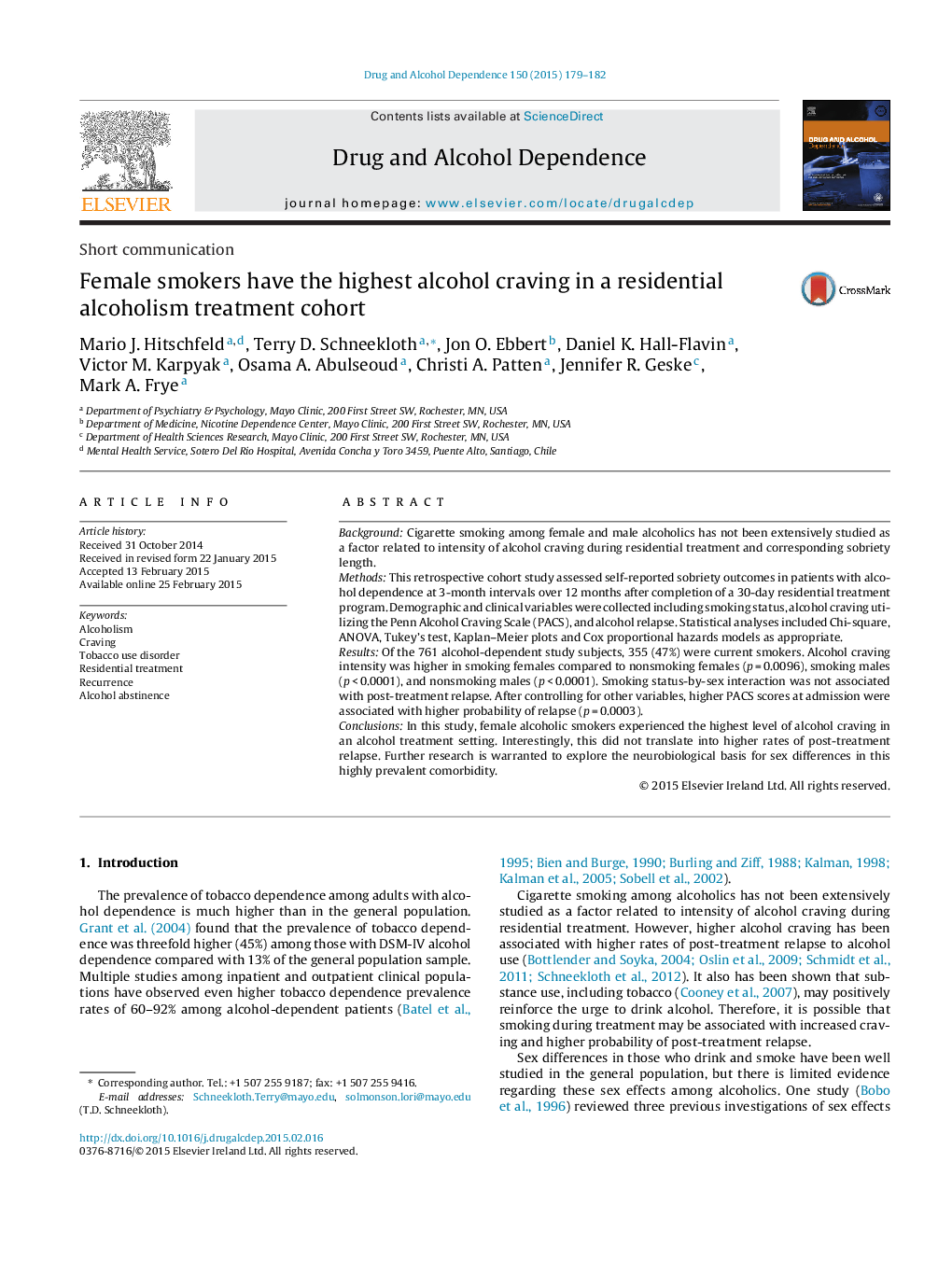| Article ID | Journal | Published Year | Pages | File Type |
|---|---|---|---|---|
| 1069825 | Drug and Alcohol Dependence | 2015 | 4 Pages |
•Alcohol craving is a relevant clinical variable associated with subsequent alcohol relapse.•Smoking alcoholic women have higher alcohol craving than smoking alcoholic men and nonsmoking alcoholics of both sexes.•Smoking status by gender and smoking cessation treatment were not associated with alcohol relapse at 12-month follow-up.•After controlling for confounders, only the Penn Alcohol Craving Scale at admission was associated with alcohol abstinence at 12-month follow-up.
BackgroundCigarette smoking among female and male alcoholics has not been extensively studied as a factor related to intensity of alcohol craving during residential treatment and corresponding sobriety length.MethodsThis retrospective cohort study assessed self-reported sobriety outcomes in patients with alcohol dependence at 3-month intervals over 12 months after completion of a 30-day residential treatment program. Demographic and clinical variables were collected including smoking status, alcohol craving utilizing the Penn Alcohol Craving Scale (PACS), and alcohol relapse. Statistical analyses included Chi-square, ANOVA, Tukey's test, Kaplan–Meier plots and Cox proportional hazards models as appropriate.ResultsOf the 761 alcohol-dependent study subjects, 355 (47%) were current smokers. Alcohol craving intensity was higher in smoking females compared to nonsmoking females (p = 0.0096), smoking males (p < 0.0001), and nonsmoking males (p < 0.0001). Smoking status-by-sex interaction was not associated with post-treatment relapse. After controlling for other variables, higher PACS scores at admission were associated with higher probability of relapse (p = 0.0003).ConclusionsIn this study, female alcoholic smokers experienced the highest level of alcohol craving in an alcohol treatment setting. Interestingly, this did not translate into higher rates of post-treatment relapse. Further research is warranted to explore the neurobiological basis for sex differences in this highly prevalent comorbidity.
